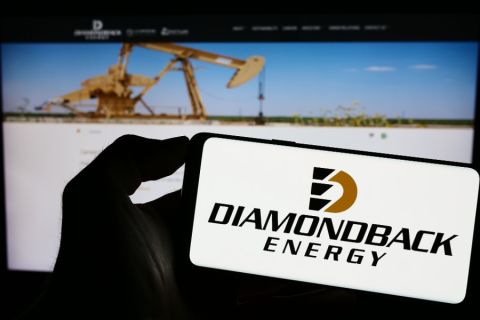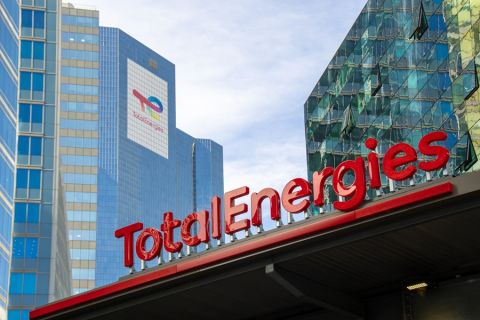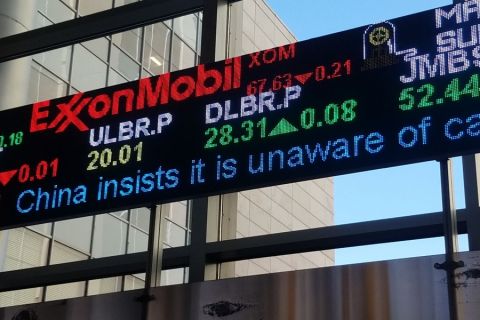Equal partners Wintershall and RWE-DEA are planning to install a new export pipeline capable of carrying 1 million tonnes of oil a year from the Mittelplate field - Germany's biggest offshore field.
Mittelplate is exploited from a shallow water artificial island located nearly 5 miles (8 km) from shore in tidal land in Germany's North Sea sector and via extended reach onshore wells.
Mittelplate has been producing for nearly 16 years since 1987 and until now US $580.72 million has been invested in the project.
But this summer should see a major change from dependence on barges for oil export from the offshore part of the field with the installation of a pipeline export system. It will carry both crude and produced water from the offshore site, which is in a specially protected bird sanctuary in the Wadden Sea, to an onshore process facility.
The Mittelplate consortium, a joint venture created between German operator RWE-DEA and partner Wintershall, is installing two 4.6-mile (7.5-km) pipelines from the offshore platform to an onshore site this summer. One will carry liquids from the Mittelplate island to an onshore site near Freiderichskoog, northwest Germany, where oil, water and gas will be separated. Another line will return produced water back to the island for re-injection. Originally the plan was to install flexible pipe but because of the tidal lands, the pipeline will instead be drilled into position, in 0.8-mile (1.4 km) sections.
But first the landfall section and the island connection have to be completed.
RWE DEA spokesman Harald Graeser said, "The pipeline will be laid mid July. But we have to work around and complete the landfalls for the island and the land station and that needs some time."
Once the pipeline is laid over the mud flats to the offshore island, a further 1.75-mile (2.8 km) onshore section will be laid, using corrosion resistant steel pipe, to a land station at Dieksand.
By providing the new pipeline, the consortium will not only improve reliability of the export route from the offshore facility, but also cut barge movements in the North Sea and their attendant oil spill risk. "About 1,000 oil transports through the tidal flats in special-design tug-and-barge units would be eliminated," consortium members have said in their argument for the fixed export pipeline.
Until now, weather and tidal conditions have restricted output by the double-hulled barges and tugs used to carry Mittelplate offshore production to the port of Brunsbuttel, to 5.03 million bbl per year. Once the new export line is in place, and with six new onshore production wells to tap the eastern end of the field with a new drilling rig, the consortium aims to raise Mittelplate production to 7.55 million bbl a year. The total cost of the new pipeline is $129 million - and another $64.5 million is being invested in the new rig.
Bernard Schmidt, head of exploration and production for RWE-DEA, said Mittelplate is Germany's largest oil deposit. "Sixty-five percent of Germany's crude is found there," he said, speaking recently at an energy forum in Mannheim, Germany, convened by parent company BASF. Schmidt said remaining reserves in Mittelplate are estimated at 449 million bbl.
Wintershall completed its internal approvals for the pipeline in 2003 but there is a further period of public objection to the plan, which closed November 2004. "There was a technical challenge and this means that we have 3 months to put this 5-mile (8-km) pipeline into the ground," Schmidt said, speaking through a translator. At best, it seems that the pipeline will not be installed much before the summer 2005.
But assuming the new export line can be laid soon, it could provide the outlet for further nearby reserves. Schmidt indicated Wintershall is already looking at new deposits around the Mittelplate area.
"There is major exploration potential both north and south and we will tackle these. Once we have fixed the pipeline, we can increase production," Schmidt said.
In February 2003 Mittelplate reached 74.9 million bbl of oil production. Of that total, 7.3 million tonnes was from the offshore location where there are 17 injection and production wells, and 2.7 million tonnes were produced onshore at Friedrichskoog on the German coast, where there are a further seven wells. These onshore wells have stepouts between 5 miles and 5.6 miles (8 km and 9 km), almost as long as those at BP's Wytch Farm field in southern England.
Germany's Mittelplate field is in tidal lands in the Wadden Sea, which is also a bird sanctuary and home to other wildlife. Because of the fragility of the natural environment there, the offshore platform features a totally closed operating system that is continuously monitored and controlled to prevent discharges to the surrounding environment. Also, the artificial island is protected so the tidal lands cannot penetrate the production facility.
"There are multiple safeguards against possible risks," the consortium said. Even the cargo barges used to export crude are double hulled with separate compartments to minimize any crude spillage.
Once laying of the new pipeline is complete, the enhanced output expected from the field will allow the offshore island to be vacated earlier than originally planned, lessening the impact on the wetland location where it is sited. RWE-DEA said, "The environmental balance will be improved in spite of higher production volumes, with the added benefit of a shorter total duration of production and an earlier end to activities in the sensitive tideland ecosystem," consortium members have said previously.
Recommended Reading
Diamondback Stockholders All in for $26B Endeavor Deal
2024-04-29 - Diamondback Energy shareholders have approved the $26 billion merger with Endeavor Energy Resources.
TotalEnergies Eyes Suriname FID by Year-end 2024
2024-04-29 - France’s TotalEnergies and U.S. partner APA Corp. look to place their long lead orders ahead of a final investment decision related to their joint development offshore Suriname in Block 58.
ProPetro to Provide eFrac Services to Exxon’s Permian Operations
2024-04-29 - ProPetro has entered a three-year agreement to provide electric hydraulic fracturing services for Exxon Mobil’s operations in the Permian Basin.
Keeping it Simple: Antero Stays on Profitable Course in 1Q
2024-04-26 - Bucking trend, Antero Resources posted a slight increase in natural gas production as other companies curtailed production.
Oil and Gas Chain Reaction: E&P M&A Begets OFS Consolidation
2024-04-26 - Record-breaking E&P consolidation is rippling into oilfield services, with much more M&A on the way.





